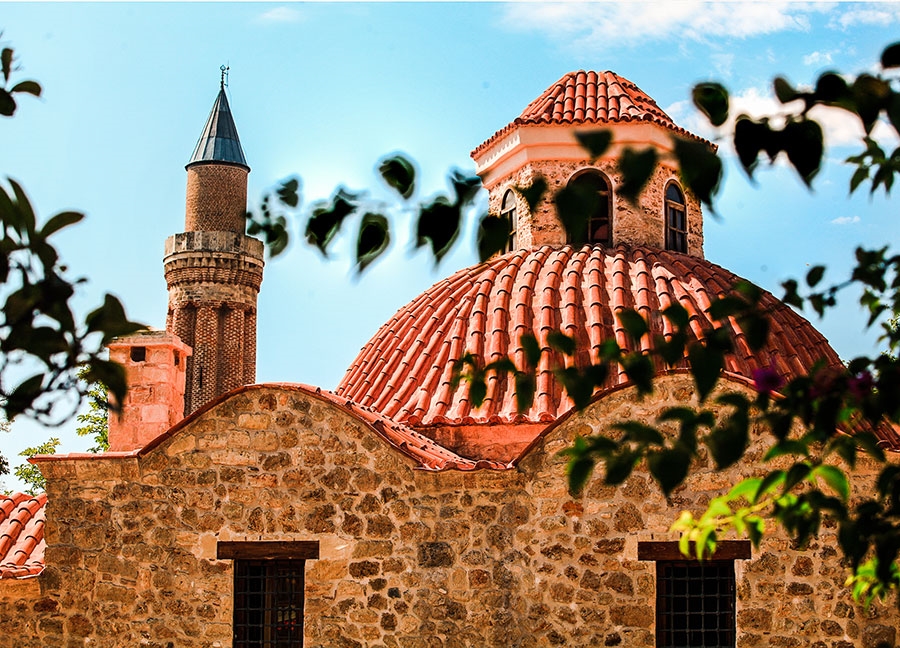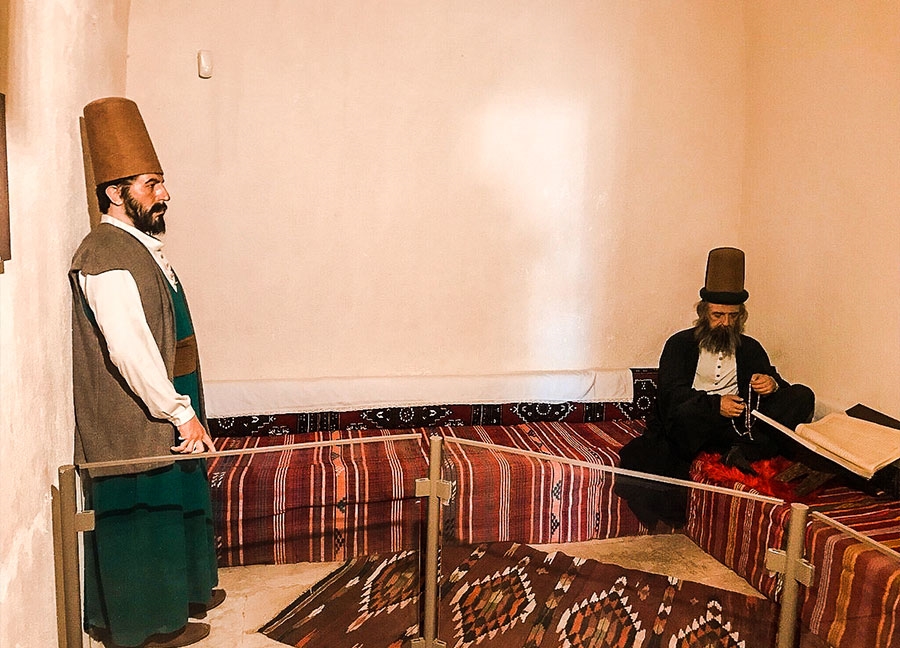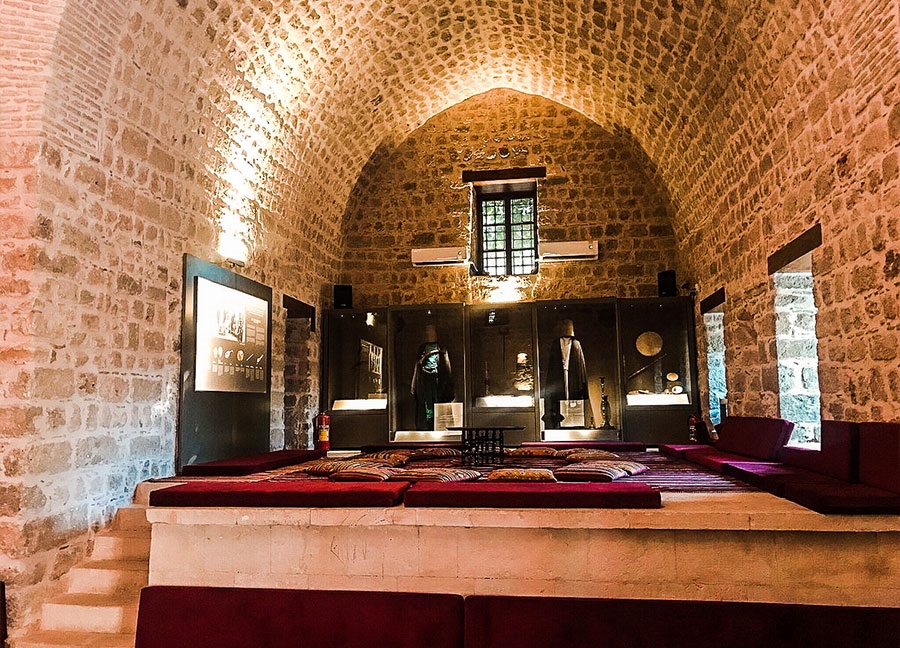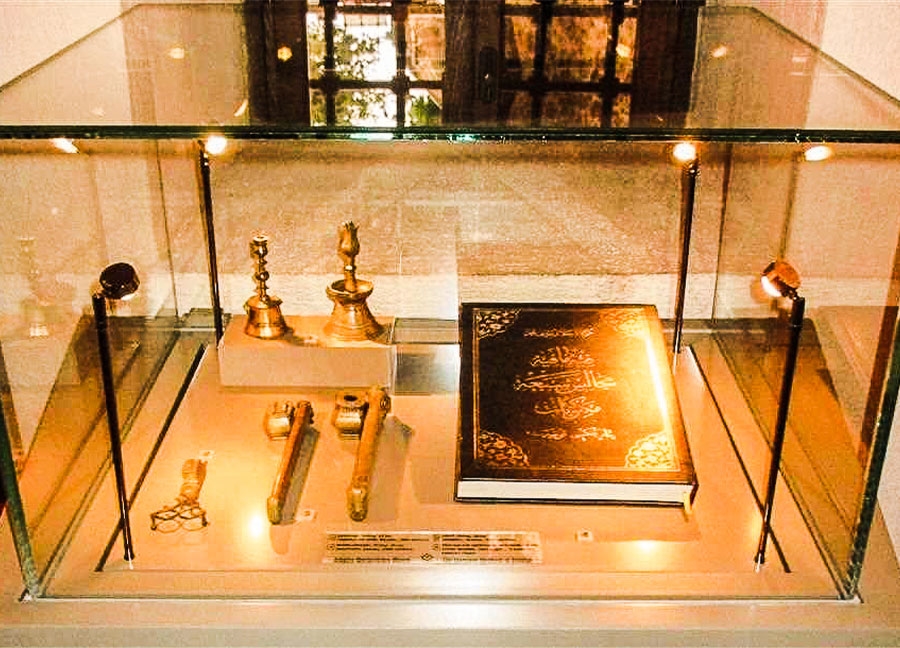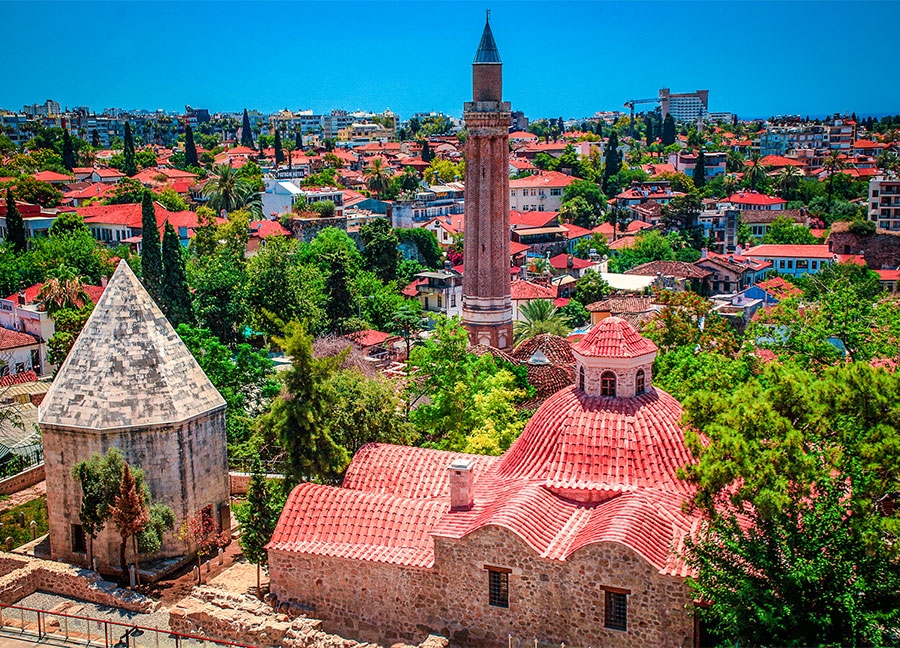The structure is among the collection of works in the Yivli Minare Mosque area in Kaleiçi. It was built by the Seljuk Sultan Alaeddin Keykubad in 1255 and started to be used as a Mevlevihane in the 16th century during the Ottoman period. It is thought that Antalya Mevlevihanesi is among the first 4 Mevlevihanesi established in Anatolia.
Located in a building complex consisting of the Mevlevihane Hamam and the Tombs of Nigar Hatun and Zincirkıran Mehmet Bey, the Mevlevihane was transformed into a museum in 2018 cultural and artistic activities were initiated after the restoration works.
Today, the items used by the dervishes are exhibited in the Mevlevihane Museum. It is along with the boards on which the animations of the Mevlevi are made and detailed information is learned. At the same time, Mesnevi and Divan readings, sema rituals, sufi music concerts and seminars are held in the museum.
The Mevlevihane was built using a dome and ceiling system. It has a transverse rectangular plan and two floors, and has stepped elevations in the interior. When the building is entered through the door on the south side, the hexagonal illuminated lantern in the middle of the dome that covers the main space gives comfort to the interior thanks to the light it provides. There are two vaulted barrel rooms in the north, one in the northeast, and three in the west of the building. The rectangular planned iwan covered with pointed barrel vaults on the east side opens to the domed courtyard in the middle. There is a mihrab on the south side of the iwan. Mevlevi clothes and works related to Mevlevi are exhibited in three showcases in this area. On the north of the iwan, the Matbah-ı Şerif animation can be seen in the area where a hearth niche is on the west wall, connected to the iwan and the main domed room with a door.
In the north, two rooms are connected with the domed main space by a door, the Sheikh Room is animated in the east, and an interactive presentation about the Mevlevihane is made in the west. Again, the information boards in the two rooms on the west side open to the Sema Field, the Mevlevi and Hz. Promotions of Mevlânâ's life and works are carried out. In addition, candlesticks, candle scissors, orgies and censers are exhibited in the three showcases in this area.
The bath structure is known as Mevlevihane Hamam. Yivli Minare Hamam and Yivli Minare Kulliye Hamam, among other complex structures, have a rectangular plan. The design and dimensions of the bath, whose exact date is unknown, reflect that it was built for private use. From the beginning of the 16th century, it started to be used as a Mevlevihane Hamam.
The tomb was built in the name of Nigar Hatun, the mother of Şehzade Korkut, son of Yıldırım Bayezid II and Fatma Sultan, was built using cut and rubble stones, bricks, among which pieces of reused marble were used. Although the exact date of construction of the building, which resembles the Seljuk style, is not known, it is thought to belong to the 15th century.
Zincirkıran Mehmet Bey Tomb, on the other hand, was built in 1377 by Mehmet Bey, who was nicknamed "Zincirkıran" because he managed to take the city by breaking the chains of the port. In the tomb, besides Mehmet Bey, there are the graves of his son Ali and Mustafa Dede Efendi, the Sheikh of Antalya Mevlevihanesi.


